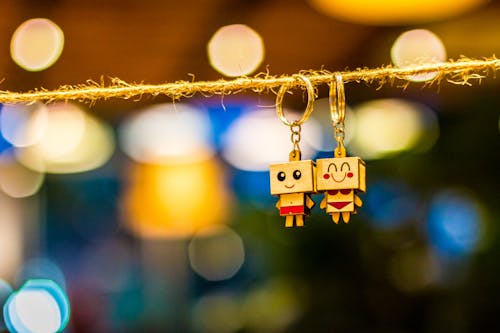Keychains with strings are often overlooked and underrated accessories that you can find in any department store. But they’re so much more than that.
A keychain not only helps you keep track of your keys, it also adds a personal touch to your everyday carry. It’s a cheap but effective way to add some style and flair to your physical set of keys.
These small accessories are quite versatile in their own right, given the number of different materials, colors, and patterns that you can choose from when creating them. If you want to learn how to make keychains with strings, read on!
What You’ll Need

– String – The most common way of making a keychain with string is by either knotting or tying it around the keyring. The other option is to sew it by hand.
– Keychain hooks – These are merely decorative pieces that clip onto your keychain to hold and secure your keys.
– Scissors – To cut the string.
– Keyring – The finishing touch for your new and personalized keychain.
How to Make Keychains with Strings
– Choosing the string – The string you use to make your keychain will depend on your preferences, the type of keys you’re using, and the aesthetic you’re going for. There are a variety of different string types and colors to choose from, so you’ll have plenty of options to select from.
– Wrapping or knotting the string – As previously mentioned, this is the most common way of making keychains with string. You’ll need to know how to tie a basic overhand knot or a surgeon’s knot if you want your keychain to look neat and tidy. You can also try wrapping the string around the keyring, as this method results in a more textured design.
– Sewing the string – If you’re going for a more professionally-made keychain, you can either hand sew it or use a sewing machine. If this is your first time sewing, you might want to use a sewing machine, as it’s easier to control.
How do you tie thread keychain?
How to Crochet a Keychain with String
– Choosing the string – You’ll need to consider what type of string you want to use for this project. What kind of look do you want to achieve? What colors would you like? There are so many options to choose from.
– Forming the base of the keychain – First, make a slipknot with the string on a knitting needle or crochet hook. Next, you’ll want to create a chain that’s just a bit longer than the length of your keyring.
– Finishing and securing your keychain – For the finishing touches, you’ll want to slip the keyring through the chain, then tighten and secure it. As an alternative, you can braid the chain and secure it with a single or double knot at the end.
How to Knit a Keychain With String
– Choosing the string – Just like the crochet method, you’ll need to choose the type of string that you want to use. What colors do you want? What do you want your keychain to look like? What do you want it to feel like? There’s a wide variety of string types and colors for you to choose from.
– Forming the base of the keychain – First, make a slipknot with the string on a knitting needle or crochet hook. Next, you’ll want to form a chain that’s just a bit longer than the length of your keyring.
– Finishing and securing your keychain – For the finishing touches, you’ll want to slip the keyring through the chain, then tighten and secure it. Alternatively, you can braid the chain and secure it with a single or double knot at the end.
Conclusion
Keychains are often overlooked and underrated accessories that you can find in any department store. But they’re so much more than that. A keychain not only helps you keep track of your keys, it also adds a personal touch to your everyday carry.
It’s a cheap but effective way to add some style and flair to your physical set of keys. These small accessories are quite versatile in their own right, given the number of different materials, colors, and patterns that you can choose from when creating them.